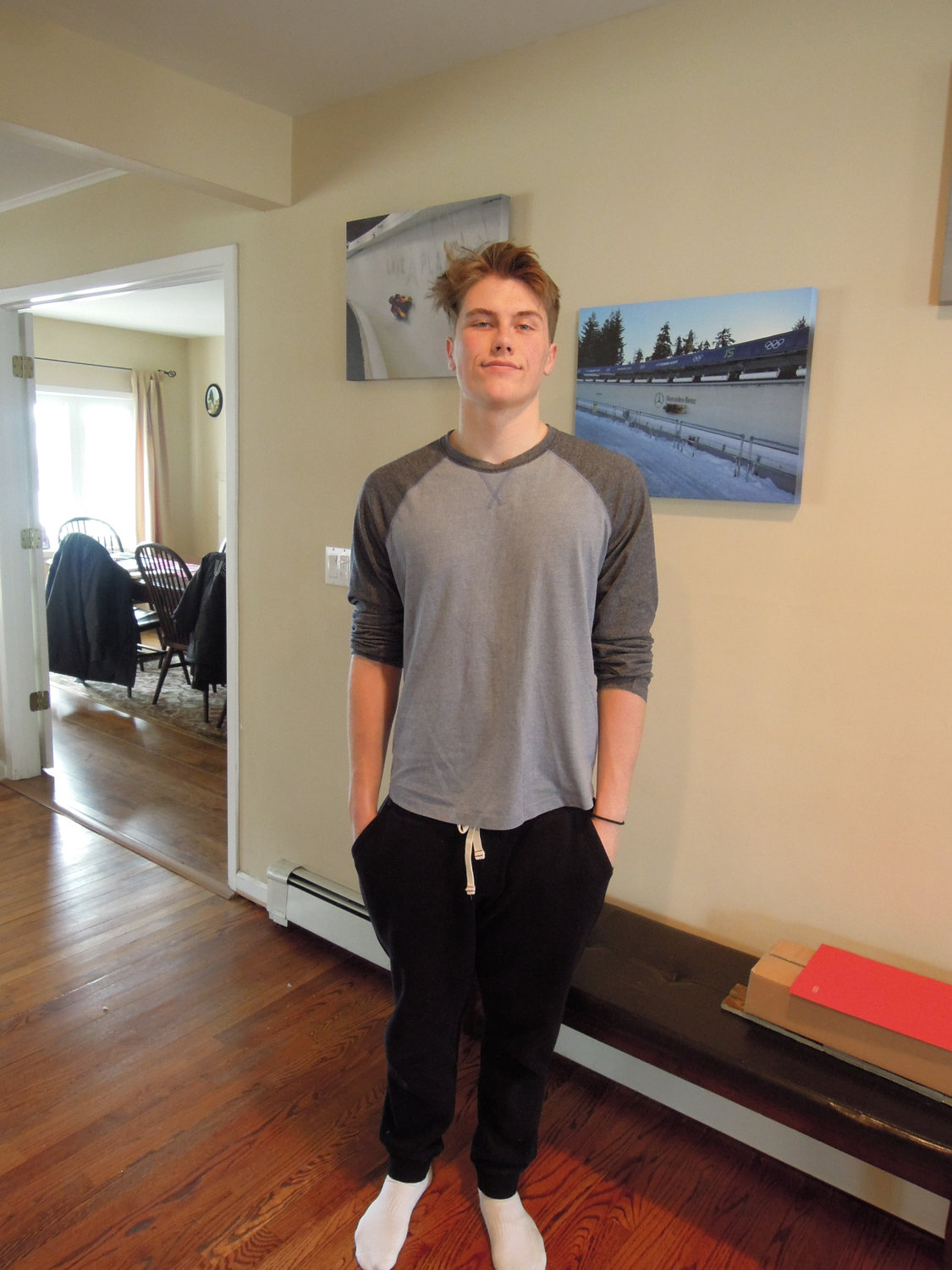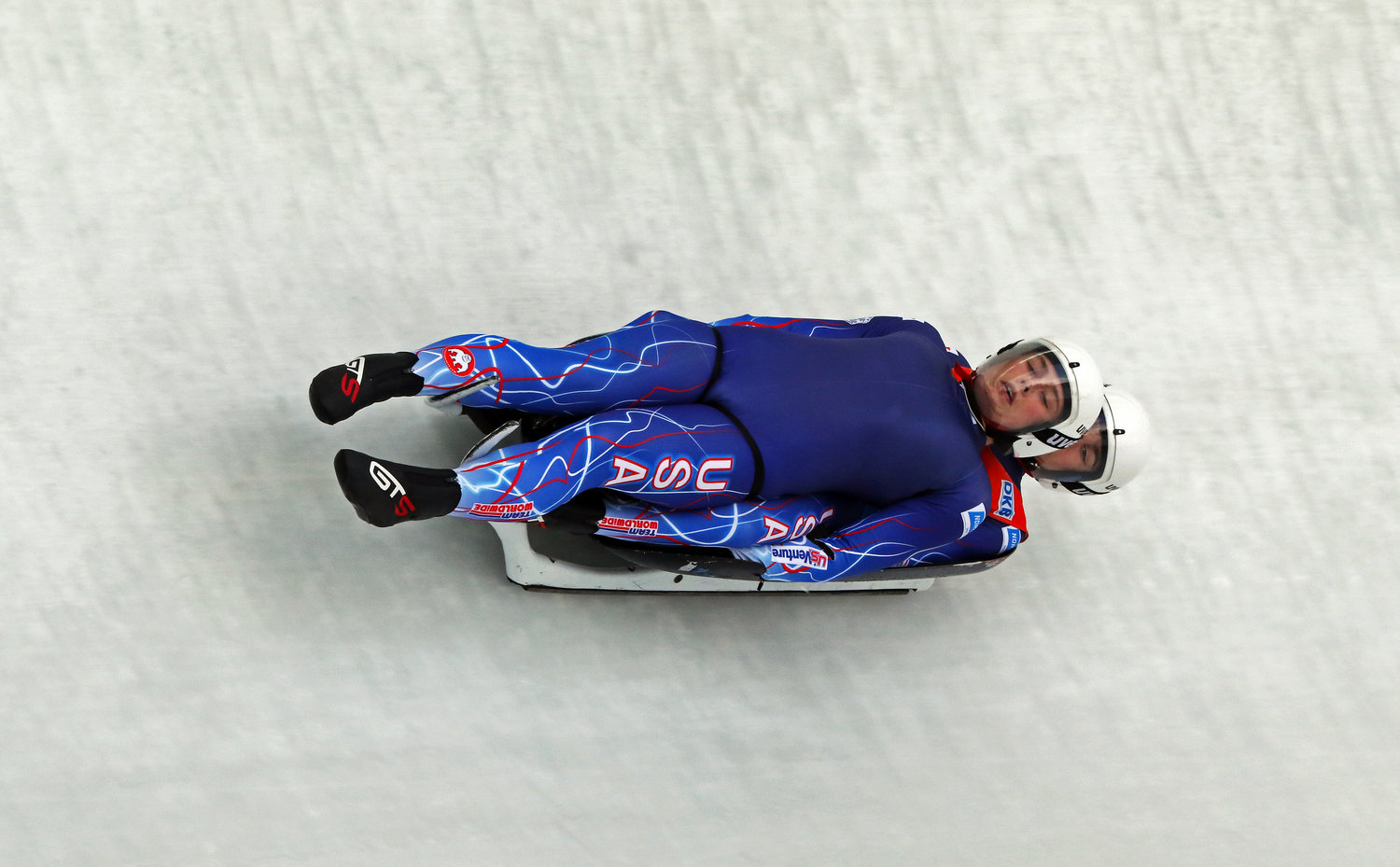Local luge racer takes gold at nationals
Luge star Sam Day brings home gold, bronze
Hurtling down the side of a mountain at speeds of up to 85 miles per hour, the luge slider lies back on a pod of fiberglass bolted to a steel superstructure. Steered by foot movements, the sled itself is a high-tech construction, but the sport is about as basic as it gets: slider, sled, ice — and speed.
Sliders, as sled riders are known, spend six months a year on the circuit, focused in each competition on two 45-second runs that are timed to thousandths of seconds. Sam Day, who lives on the border of Wantagh and Seaford, is one of the very best on the junior international luge circuit and a rising star on Team USA’s junior squad, racing both singles and doubles.
Last weekend, Day and his partner, Michael O’Gara, of La Crescenta, Calif., captured the doubles gold medal at the Norton Youth A National Championships in Park City, Utah. After being disqualified in the first race for an overweight sled, the pair surged to victory in the second run, more than a second ahead of the second-place finishers.
Day, 16, also won both of his singles seeding races to take the overall bronze. Seeding races help coaches determine which racers will advance to the next level of competition.
Day got involved in the sport after watching the 2014 Winter Olympic Games in Sochi, Russia. “I just wanted to try it,” he said. So he started to investigate, with the help of his parents, Lisa and Paul.
Each April, Team USA sends scouts all over the country in search of prospects, Day explained. “If they’re interested, they invite you to a training facility in Queens, and you get to try out on sleds with wheels,” he said. “They’re looking for people with the right instincts.”
Those who are good enough on wheels are invited to the Olympic training facility at Lake Placid to see how well they do on ice. Day, who was just 12 when he received his invitation, said it took him “a couple of runs” on wheels to get the hang of the sled. “After that, it just always felt very natural.”
Day has the ideal build for a slider: 6 feet 2 inches tall and lanky. He has the burnished complexion of an athlete who spends his days in freezing temperatures and rushing winds.
As the top man in two-man luge — O’Gara is the bottom man — Day is responsible for getting the sled going out of the gate and guiding it down the course. Although he is a professional racer, he does not have any endorsement deals, but he has a contract that is renewed every two years, conditional on his performance. Ultimately, every slider shoots for a berth on the U.S. senior Olympic team. At this point, Day’s prospects are very good.
Over the course of years of arduous mental and physical training, sliders must pass through a number of stages. “At 12 or 13, you’re on what’s called the Research Team,” Day said. Athletes learn the fundamentals of sliding and the conditioning specific to their sport. Next, they are coached through the developmental level, where they spend more time racing. Finally, they have the chance to join the junior national team, on which Day has raced since he was 14. Top athletes on the national team can also compete in the Junior Olympics. At age 18 or 19, they become eligible for the Olympics.
Day competes mainly in the U.S. and the alpine countries of Austria, Germany and Switzerland, as well as in Canada, Latvia, Norway and Russia. Next year, he hopes to race at the Olympic facility at Nagano, Japan. “We’ve heard rumors they’re opening it up again,” he said.
His favorite runs include the course at Königssee, a natural lake near Berchtesgaden, on the German-Austrian border, and Vancouver, British Columbia. His least favorite is a course in Sigura, Latvia, the scene of his scariest moments on the circuit. “In the biggest curve, about halfway down the mountain, we got going sideways at about 60, 65 miles an hour, and we couldn’t straighten out,” he recounted, still shaken by the memory. “We were skidding and hitting the walls. That was pretty scary.”
That incident aside, Day has been fortunate in avoiding anything serious, apart from a whiplash injury his first year. He has suffered ice burns and bone infections, he said, adding that they were common luge injuries that did not interfere with sliding. And he shrugged off an accident in Innsbruck, Austria, when he went off the track but wasn’t badly hurt.
Race preparations are at least as much mental as physical, Day said. Most days, he is preparing for the week’s two races, going over the run in his mind and imagining the line and the turns. “I don’t get nervous until just before the race,” he said, “when my coach pats me on the shoulder.” Day’s coaches have included Robert Fegg, a former Olympic silver medalist from Germany; and Klim Gatker, a former member of the Soviet Union’s luge team.
Once in the gate, his nervousness falls away, he said. In less than a minute, the race is a thing of the past. The scores are an average of each team’s two times.
The demands of the circuit preclude attending high school, so Day is home-schooled. “I finished this semester’s work already, so I can just concentrate on luge,” he said.
Next year, his bottom man, O’Gara, will turn 18 and age out of junior competition. Under international rules, both could move up to the senior team with a shot at the Olympics. But Day is one of the few juniors competing in both doubles and singles, and he will have a better chance of doing both at the highest level if he remains a junior for another year.
He doesn’t look much beyond the possibility of competing in the Olympics. Professional luge racers do exist, but “if I do well in the Olympics, that’s as far as I’d probably want to take it.” He sees college and a career in business after his racing days are past.
Day spends about three months a year at home, which gives him a chance to catch up with friends during the holidays and for a few weeks in the spring. When not racing, he keeps up his physical training and practices with the sled off the ice. Besides close friends on Team USA, he also has good friends among the international squads. Meeting people and seeing all the cities he has visited are among the high spots of the tour, he said.
His parents, both international freight forwarders, attend his biggest races. Lisa said she is looking forward to visiting the famed winter sports center at St. Moritz, Switzerland, next season. “I’ll definitely be there,” she said.










